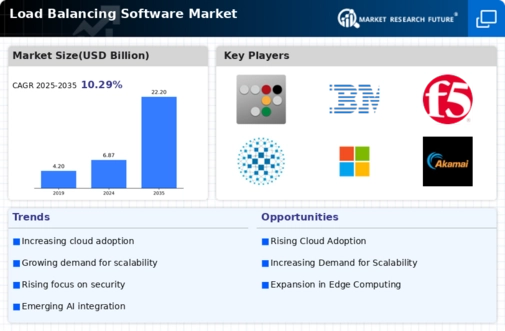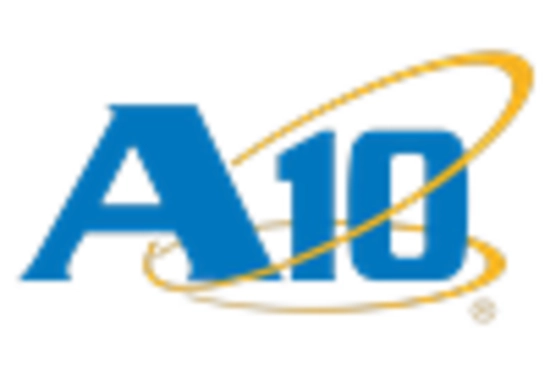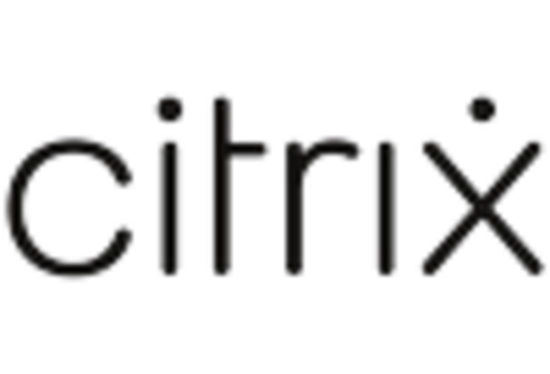Adoption of Cloud-Based Solutions
The Load Balancing Software Market is witnessing a notable shift towards cloud-based solutions. As organizations migrate their operations to the cloud, the demand for load balancing software that can seamlessly integrate with cloud environments is increasing. This trend is supported by the rise of Software as a Service (SaaS) applications, which require robust load balancing to manage fluctuating user demands. Market analysis indicates that cloud-based load balancing solutions are expected to account for over 60% of the total market share by 2026. This shift not only enhances scalability but also optimizes resource utilization, making it a critical driver in the load balancing software landscape.
Need for Enhanced Security Measures
The Load Balancing Software Market is increasingly driven by the need for enhanced security measures. With the rise in cyber threats and data breaches, organizations are prioritizing security in their IT infrastructure. Load balancing software not only improves performance but also plays a vital role in distributing traffic to secure servers, thereby mitigating risks. The market is witnessing a trend where businesses are seeking solutions that integrate security features, such as DDoS protection and SSL offloading, into their load balancing strategies. This focus on security is expected to propel the growth of the load balancing software market, as organizations aim to safeguard their digital assets while maintaining optimal performance.
Emergence of IoT and Connected Devices
The Load Balancing Software Market is being shaped by the emergence of the Internet of Things (IoT) and the proliferation of connected devices. As more devices become interconnected, the volume of data traffic generated is escalating, necessitating advanced load balancing solutions to manage this influx. Organizations are increasingly adopting load balancing software to ensure that their networks can handle the demands of IoT applications, which often require real-time data processing and reliability. Market forecasts suggest that the IoT sector will contribute significantly to the load balancing software market, as businesses seek to optimize their infrastructure to support a growing number of connected devices.
Increasing Demand for High Availability
The Load Balancing Software Market is experiencing a surge in demand for high availability solutions. Organizations are increasingly reliant on their digital infrastructure, necessitating systems that ensure continuous uptime. As businesses expand their online presence, the need for load balancing software that can distribute traffic efficiently across multiple servers becomes paramount. According to recent data, the market for load balancing solutions is projected to grow at a compound annual growth rate of approximately 15% over the next five years. This growth is driven by the need to maintain service availability and performance, particularly in sectors such as e-commerce and finance, where downtime can lead to significant revenue loss.
Growth of E-Commerce and Online Services
The Load Balancing Software Market is significantly influenced by the rapid growth of e-commerce and online services. As more consumers turn to digital platforms for shopping and services, businesses are compelled to enhance their online infrastructure. Load balancing software plays a crucial role in managing the increased traffic and ensuring a smooth user experience. Recent statistics reveal that e-commerce sales are projected to reach over 4 trillion dollars by 2025, underscoring the necessity for effective load balancing solutions. This growth not only drives demand for load balancing software but also encourages innovation in the industry to meet the evolving needs of online businesses.

















Leave a Comment